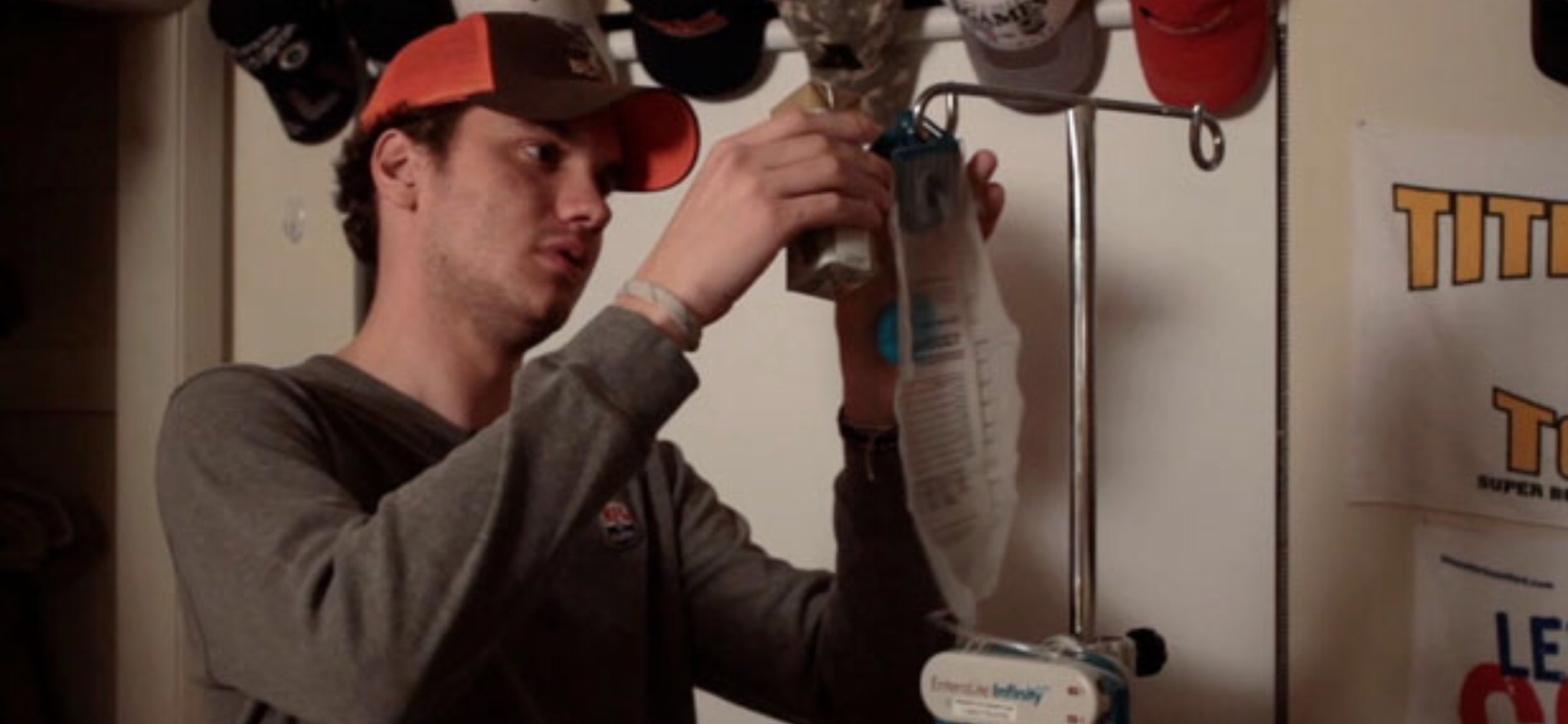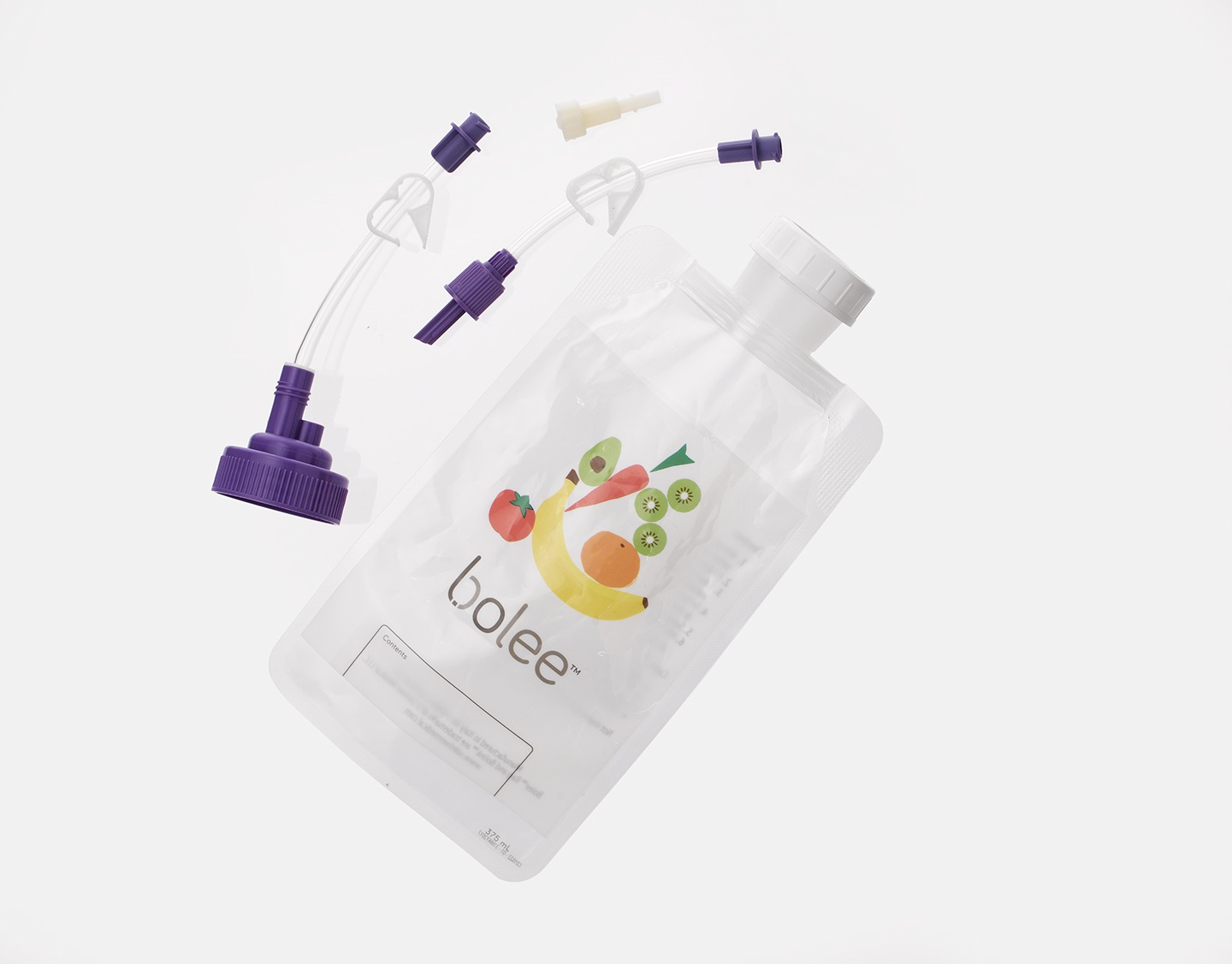If I took my shirt off, unfortunately you wouldn’t see a chiseled movie star’s body. I’m not really looking like the guys from 300 these days. Rather, you would see scars from plenty of stitches or procedures, a lean figure, and a hole in my stomach with a white thing sticking out of it. That white thing is my G-tube, or my feeding tube.
Like many CF patients, I struggle to keep weight on my body because of the pancreatic deficiency associated with the disease. I might be 6’3, abnormal for someone with cystic fibrosis, but I am as light as a feather.
The feeding tube experience is still relatively new for me. I have only had it for barely over two years now. It had always been talked about and I dreaded the idea of getting one. I always associated feeding tubes with extreme malnourishment in third world countries, or for people who are really sick. I have since found out that I was wrong.
After I had a bout with pancreatitis my sophomore year of college, there was no running away from the feeding tube. Pancreatitis was horrible. If you have had it before, you know exactly what I am talking about. If you haven’t had it, or haven’t even heard of it, like me before I was sitting in the hospital with it, the short version of the illness (if that is even what it is considered) is that is causes a tremendous amount of abdominal pain because of swelling or something like that. I’m no scientist, but I think that’s what was going on. It was just horrible. I hope you never have to deal with it, ever. The hospital staff equated the pain to getting stabbed in the gut by a knife over and over and over again because the pain comes and goes every few minutes. If that is actually true, I really hope I never get stabbed by a knife. It’s also one of those things that the doctors really can’t do anything for. They tried to make things easier by offering me pain medicine. I will be the first one to tell you, I made a mistake there. I thought I was a tough guy and could get through it. I could not have been anymore wrong in my entire life. Advil was not cutting it. Like an idiot I refused to take anything stronger until day three when I took half of a painkiller. Other than that, I basically had to fast for what seemed like a week. Fasting supposedly shortens the symptoms. Who knows if that actually helped, but what it led to was rapid weight loss. After about a week and a half of not eating anything more than a piece of toast here or there, I had dropped down to 137 pounds. There was nothing glamorous about that; I was literally skin and bones. The conversation I had been dreading for years took place, it was time to get a feeding tube. One week after my sophomore year at Boston College ended, I was home and went into the operating room to get the tube put in.
I have to tell you, I freaking love the feeding tube. After two years, I now weigh 175 pounds. The worst part was the first two or three weeks after getting it put in. There was a surgery involved, so the familiar pain of pancreatitis was back, just this time for a completely different reason. I won’t lie; I was strung up on the couch for quite a while right after it got put in. They told me it would be 6-10 weeks before I could resume normal athletic activity. I made sure it was six. I put my skates on and played hockey exactly 42 days after surgery. I set that goal up so that I wouldn’t get complacent with just sitting around worrying about the new little part of me. I also wanted to prove to myself that I could actually play hockey with a tube inside me. I had no problem with playing that night – it was just really nice to get off the couch.
The feeding tube itself is exactly what it sounds like. It’s a little port that is basically 2-3 inches long, and it goes directly into my stomach. All I do is connect a 12-inch hose to it, and then put whatever I want through it. Primarily, I connect that hose to what looks like an IV pump. Liquid nutrition is pumped through the tube into my stomach overnight. It can take anywhere from 6-8 hours. That was probably the toughest part of it all. I had to learn how to sleep with my stomach connected to a pump. That really sucked because I used to sleep on my stomach, now I have to sleep on my back. Other than the “overnight feeds,” I can do a bolus feed. Basically, I just get a giant syringe out and shoot whatever I want through my feeding tube. The port acts like another mouth, and when I say, whatever I want, I really mean whatever I want. Once I became comfortable with it, I started shooting anything and everything through it.
I have plenty of college stories I could tell you that involve the G-Tube, this may not be the time or place, though.
On a more serious note, though, I am able to take in as much 5000 calories per day. That includes my overnight feeds, three square meals, and an extra bolus feed or two during the day. The weight flies on when I really want it to. I still have some work to go to get to my goal of 190 pounds, but I’ll get there, hopefully within the next six months. I have seen an increase in my energy and a pulmonary function testing as a result of all this too. I think the feeding tube is directly responsible.
The only negative, and I hardly consider it one, is the visual appearance of the tube itself. I’ll admit, it really isn’t the most attractive thing in the whole world. When I’m at the beach and I’m trying to show off my six pack, unfortunately my ripped abs aren’t the first thing the ladies see. I needed to find a level of comfort with my new visual appearance. It took about a month or so, but here’s the deal I cough loudly, I look lean and I have to spit a lot. I have plenty of reasons to think I stand out for being a little different, but I could hardly care less. I just accepted the fact that I have a tube in my stomach and if I am going to receive a negative judgment from someone, then that person can go screw, I get plenty of bad looks when I start coughing, so who cares. The G-tube is great, I love it, that’s all that matters.



